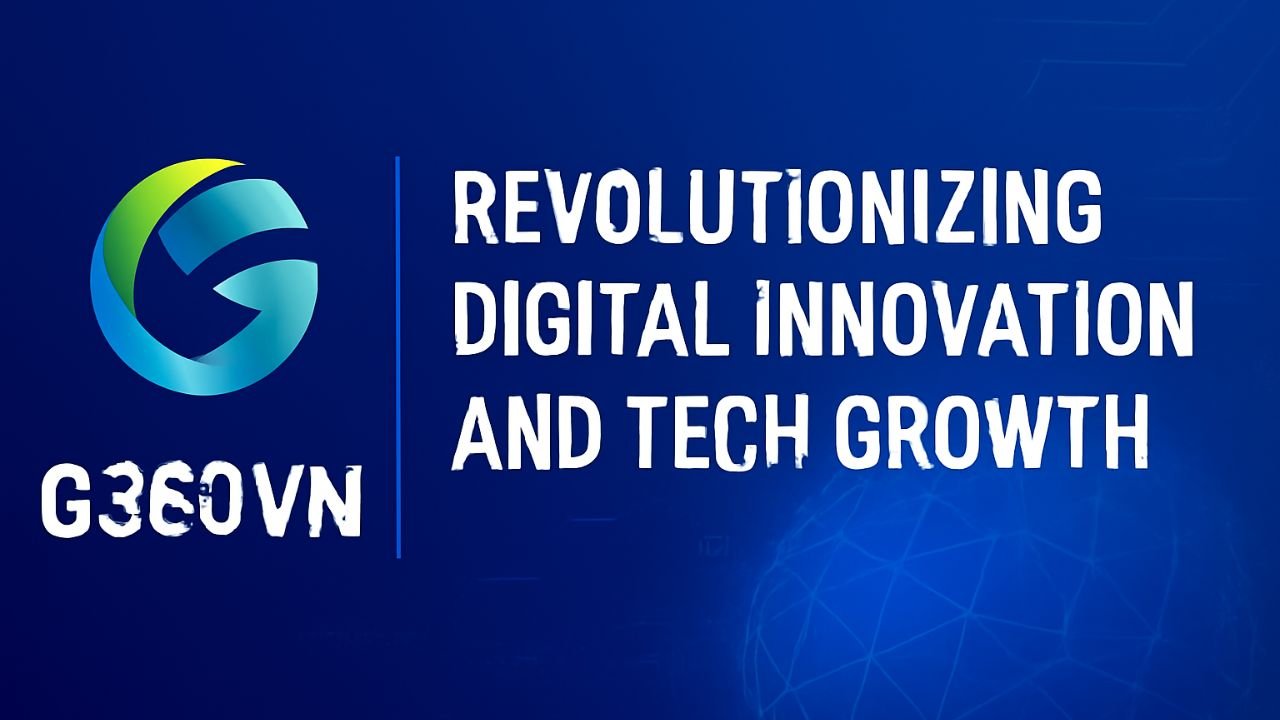The world of business computing is evolving faster than ever. As technology continues to reshape how businesses operate, staying ahead of tech trends is no longer a luxury—it’s a necessity. Whether you’re a young professional, a tech-savvy entrepreneur, or someone just starting to explore the world of business technology, understanding the forces driving this evolution is crucial.
In the Business Computing World, digital transformation is not just a buzzword; it’s a core driver of change. With tools like cloud computing, AI, and advanced cybersecurity measures, businesses can operate more efficiently, make smarter decisions, and provide better services. From enterprise IT solutions to innovative business software tools, the technology landscape is transforming the way companies interact with clients, manage operations, and scale their efforts globally.
In this article, we’ll dive deep into the technologies defining the Business Computing World, what the future holds, and how businesses can adapt to stay competitive in an increasingly tech-driven environment.
Here’s a Featured Snippet-optimized, list-style format for your article “Business Computing World: Future Tech Revealed” that’s tailored for Google’s search algorithms. The goal is to create an informative, scannable, and keyword-rich list that Google will appreciate.
Top Trends in the Business Computing World: Future Tech Revealed
- AI and Automation: Revolutionizing Business Efficiency
AI-driven tools and automation are transforming business workflows, enhancing data analytics, and improving customer experiences across industries. - Cloud Computing: Scalable Solutions for Modern Businesses
Cloud platforms like Microsoft 365, Google Workspace, and AWS are enabling businesses to store and access data securely while providing flexible, cost-effective solutions. - Cybersecurity: Safeguarding Your Business in the Digital Age
With growing digital threats, adopting advanced cybersecurity platforms and strategies is essential for protecting sensitive business data and ensuring business continuity. - Edge Computing & IoT: Real-Time Data and Connectivity
Edge computing is empowering businesses to process data at lightning speed, with IoT devices connecting everyday business operations for greater efficiency. - Digital Transformation: Accelerating Business Growth
Businesses are embracing digitalization, with tools that optimize operations, enhance collaboration, and help companies scale in an increasingly tech-driven world. - Enterprise Tech Solutions: Building Future-Ready IT Infrastructure
Investing in robust IT infrastructure and enterprise software solutions ensures businesses stay competitive, agile, and capable of handling complex tasks efficiently. - Remote Work Technology: The Future of Flexible Business Operations
Cloud-based collaboration and project management tools are enabling businesses to thrive in remote work environments, offering productivity solutions that enhance teamwork across locations. - AI-Driven Business Insights: Making Smarter Decisions
AI-powered data analytics tools are helping businesses gain deeper insights, predict trends, and make more informed decisions, enhancing overall business performance. - SaaS Platforms: Streamlining Operations Across Teams
Software-as-a-Service (SaaS) platforms are transforming the way businesses manage everything from HR and accounting to customer service and marketing, offering efficiency and scalability. - Global Market Trends: Embracing Digital Solutions for Business Growth
As businesses worldwide adopt cutting-edge tech solutions, staying informed about global IT trends and market shifts is key to sustaining long-term success.
What Is the Business Computing World?
At its core, the Business Computing World refers to the intersection of technology and business operations. It encompasses everything from the software tools used to manage business functions—like customer relationship management (CRM) systems and enterprise resource planning (ERP) software—to the underlying infrastructure that supports these activities, including data management solutions, cloud platforms, and cybersecurity protocols.
The role of technology in business has evolved significantly over the past few decades. In the early days of computing, businesses relied heavily on on-premises infrastructure, with physical servers and locally stored data. Fast forward to today, and we see businesses moving towards cloud-based solutions, artificial intelligence (AI) integration, and automated systems that streamline processes across all levels of operations.
The business computing landscape also includes the strategies that companies use to leverage these tools effectively. IT strategies for businesses today are focused on improving efficiency, reducing costs, enhancing security, and enabling growth in an increasingly competitive global market.
Top Future Tech Trends Shaping the Business Computing World
A. AI and Automation
One of the most transformative forces in business computing today is Artificial Intelligence (AI). AI and automation are enabling businesses to process data at unprecedented speeds, make smarter decisions, and improve customer experiences. If you’re interested in understanding the safety and alternatives to AI-based tools, check out this detailed Imginn review.
AI is already being integrated into business software tools in areas like customer service, marketing, and data analysis. For example, AI-powered chatbots can handle customer queries 24/7, freeing up human agents for more complex tasks. Meanwhile, AI-driven data analytics tools can predict trends and consumer behavior, enabling businesses to make data-backed decisions that drive success.
In addition, IT automation tools are helping businesses reduce manual workloads and increase operational efficiency. Routine tasks, like software updates, system monitoring, and data backups, can be automated, allowing businesses to focus on more strategic initiatives.
B. Cloud Computing and SaaS
The rise of cloud computing has been one of the most significant developments in business technology. Cloud platforms allow businesses to store data and access software applications over the internet, eliminating the need for expensive on-premises infrastructure.
Popular cloud solutions like Microsoft 365, Google Workspace, and Amazon Web Services (AWS) are already widely adopted, offering everything from document storage and email services to powerful computing resources that can scale as businesses grow.
The growth of Software-as-a-Service (SaaS) models is also revolutionizing business operations. Rather than purchasing and maintaining expensive software, businesses can now subscribe to cloud-based tools that are constantly updated and scalable to their needs. Whether it’s for project management (e.g., Asana), accounting (e.g., QuickBooks Online), or communication (e.g., Slack), SaaS platforms are becoming the backbone of modern business workflows.
C. Cybersecurity and Risk Management
As businesses rely more on digital solutions, the importance of robust cybersecurity measures has never been greater. With the rise of remote work, digital business transactions, and data-driven decision-making, businesses are becoming prime targets for cyberattacks.
To stay safe, businesses are increasingly adopting advanced cybersecurity platforms that provide real-time monitoring, threat detection, and vulnerability management. As cyber threats become more sophisticated, organizations need to ensure they are using the best tools to protect sensitive information, safeguard client data, and comply with regulations like GDPR.
Additionally, businesses are also implementing risk management strategies that extend beyond cybersecurity to include business continuity planning and disaster recovery, ensuring that operations can continue smoothly in the event of a security breach or other crisis.
D. Edge Computing and IoT
Edge computing and the Internet of Things (IoT) are creating new possibilities for business operations. It refers to processing data closer to where it’s generated, rather than relying on a centralized cloud server. This is especially useful for real-time data processing, as it minimizes latency and speeds up decision-making.
For example, in industries like manufacturing, edge computing can analyze data from sensors on machinery in real-time, allowing companies to predict maintenance needs before failures occur. In retail, IoT devices can track inventory in real-time, improving supply chain efficiency.
As IoT devices proliferate, businesses will find new ways to integrate this data into their operations, driving further automation and efficiency.
Digital Transformation and Enterprise Tech Trends
Digital transformation is more than just adopting new tools—it’s a comprehensive shift in how businesses use technology to drive growth. From small and medium-sized businesses (SMBs) to large enterprises, the pressure to digitize operations has intensified.
New tools are enabling businesses to embrace digitalization across various aspects of their operations. For instance, collaboration platforms like Microsoft Teams or Zoom have become integral to remote work culture. Enterprise Resource Planning (ERP) systems are moving to the cloud, allowing companies to manage everything from accounting to human resources from a centralized platform.
The acceleration of digital transformation is narrowing the technology gap between SMBs and large corporations. With cloud computing, AI, and automation now accessible to businesses of all sizes, small companies can leverage the same cutting-edge technologies that were once only available to industry giants.
Tools & Platforms Redefining Business Computing
To stay competitive, businesses need to rely on a strong IT infrastructure. From managing customer relationships and optimizing workflows to securing sensitive data, the right tools are essential.
IT infrastructure management platforms, like AWS, Azure, and Google Cloud, are redefining how businesses manage their digital resources. With these platforms, companies can access computing power, storage, and software solutions that scale with their needs. Managed IT services are also growing in popularity, as they allow businesses to offload technical maintenance and focus on their core operations.
Additionally, choosing the right tech stack is crucial for scalability and performance. Businesses that invest in a flexible, robust tech stack can adapt quickly to new challenges, integrate emerging technologies, and support future growth.
Global Market Trends in Business Computing
The global market for business computing is booming, and businesses are investing heavily in technology to stay competitive. According to recent reports, global spending on IT is expected to grow year after year as more companies transition to digital-first models. For more insights on how digital innovation is driving tech growth, you can read about G360VN’s role in this transformation.
The rise of remote work has further fueled the demand for cloud-based solutions, collaboration tools, and advanced cybersecurity measures. As companies in the UK and the USA continue to adopt digital solutions, we are also seeing an increase in demand for enterprise-level software systems and services.
Market trends also indicate that businesses are prioritizing technology adoption across all departments—whether it’s human resources, marketing, or operations. This is creating an integrated, tech-driven approach to running a business, one that ensures companies are positioned for long-term success.
Challenges and Opportunities in the Business Computing World
While the future of business computing is full of promise, it also comes with its challenges. One of the biggest obstacles is integrating new technologies with legacy systems. For businesses that have relied on older IT infrastructure, transitioning to new platforms can be complex and costly.
Data security remains another concern, especially with the rise of remote work and cloud storage. Ensuring that sensitive information is protected from cyber threats while enabling seamless collaboration is an ongoing challenge.
However, with challenges come opportunities. The digital transformation of businesses opens up new possibilities for remote work enablement, AI-driven decision-making, and innovative business models. By embracing these technologies, businesses can improve efficiency, foster innovation, and create better customer experiences.
What Businesses Should Do Now
So, what can businesses do to prepare for the future of computing? First, it’s important to stay informed about emerging trends and technologies. Businesses should invest in tools that align with their goals and adopt strategies that allow them to scale effectively.
Choosing the right enterprise software tools is crucial, whether it’s for CRM, project management, or cybersecurity. Companies should also prioritize building a resilient IT strategy that includes regular updates, employee training, and proactive security measures.
Finally, businesses should foster a culture of innovation. Encourage teams to explore new technologies, experiment with new tools, and challenge traditional business models. The future belongs to those who are willing to embrace change.
Conclusion
The Business Computing World is rapidly changing, with technology continuing to shape the way businesses operate. From AI to cloud computing, cybersecurity, and digital transformation, the tech landscape is full of opportunities for companies to improve their efficiency, scalability, and overall performance.
By staying informed about key trends and adopting the right tools, businesses can lead the way in the next phase of growth. As technology continues to evolve, so too will the opportunities for businesses to innovate and thrive.
FAQs
- What is the Business Computing World?
The Business Computing World refers to the integration of technology in business operations, including software tools, IT infrastructure, and digital solutions that support business functions. - What are the top tech trends in business computing?
Key trends include AI and automation, cloud computing and SaaS, cybersecurity, edge computing, and IoT integration. - How does AI impact business technology?
AI enhances business operations by automating tasks, improving data analysis, and enabling smarter decision-making. - Which cloud platforms are best for small businesses?
Popular options for small businesses include Microsoft 365, Google Workspace, and Amazon Web Services (AWS), offering scalable, cost-effective solutions. - What are the risks and benefits of digital transformation?
While digital transformation offers increased efficiency and growth, challenges like data security and integration with legacy systems need to be managed carefully.





